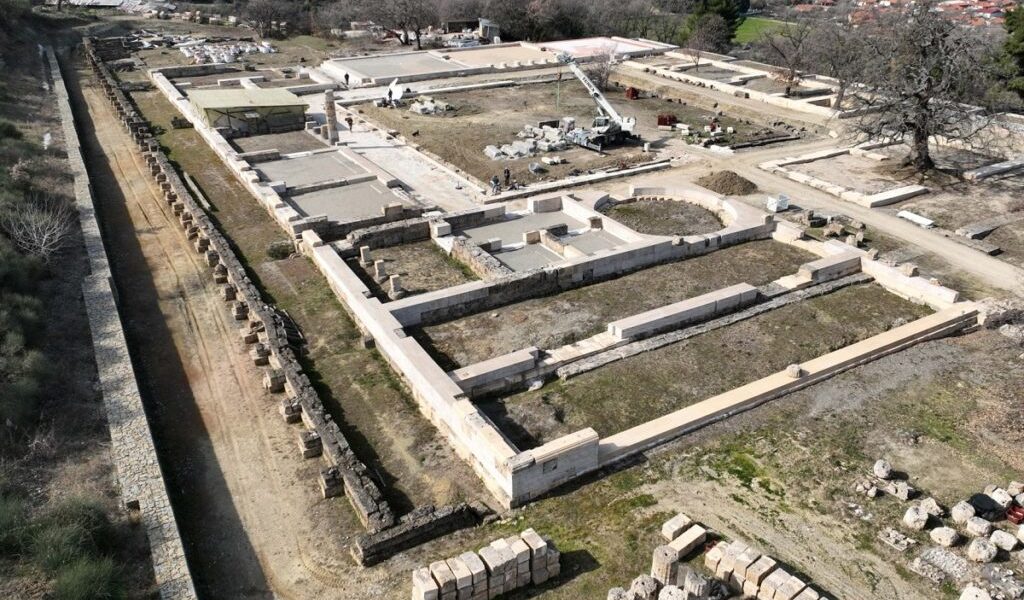The Royal Palace of Philip II in Aiges, an important archaeological site in Greece, is set to open to the public later this year after undergoing extensive restoration.
The palace, built in the mid-4th century BC, was a significant structure in Classical Greece, serving as a meeting place for Macedonian citizens and a symbol of royal authority. It was at this palace that Alexander the Great was declared king in 336 BC. Though the palace was destroyed by the Romans in 148 BC, it has been carefully restored since 2007.
Greek Culture Minister Lina Mendoni recently visited the site to work with renovation supervisors on making the 7.4-acre area accessible and visitor-friendly by the end of the year. The goal of the Aiges project is to transform the archaeological site into an archaeological park, providing modern infrastructure and services for visitors to learn about the history of Aiges, Macedonia, and its rulers.
The restoration of the Royal Palace of Philip II, scheduled to be completed in December, covers nearly 136 acres, including the adjacent necropolis and burial cluster. These areas have been open to the public since 2021. Alongside the Royal Tombs museum, ancient theater, church of Agios Demetrios, and central museum inaugurated last year, the palace forms part of the polycentric museum of Aigai. The palace, known for its innovative design, served as a model for public architecture for many centuries.




Visitors to the UNESCO World Heritage site of Aigai will soon be able to appreciate what has been called “Macedonia’s Parthenon.” A section of the upper floor of the palace façade is on display in the central museum building. The restoration project, with a budget of 20,000,000 euros, focused on restoring the grand peristyle, propylon, and arcades of the palace’s façade, as well as preserving the mosaics in the men’s rooms.
Visitors will have the opportunity to explore various areas of the palace, including the grand peristyle, throne room, banquet halls, and private quarters of the royal family. They can also admire the palace’s impressive mosaics and other artwork.

